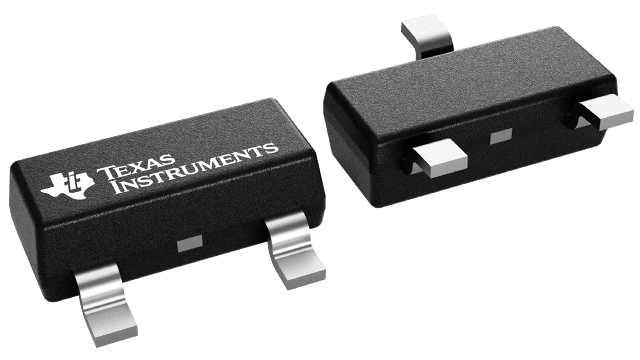Texas Instruments
LM4040D30IDBZT
LM4040D30IDBZT
Couldn't load pickup availability
LM4040D30IDBZT Texas Instruments - Yeehing Electronics
Fixed voltage, 45-µA, precision micropower shunt voltage reference
Pricing (USD)
| Quantity | Unit Price |
| 1 — 99 | 0.963 |
| 100 — 249 | 0.741 |
| 250 — 999 | 0.546 |
| 1,000 + | 0.27 |
The above prices are for reference only.
Specifications
| Manufacturer | Texas Instruments |
| Product Category | Voltage References |
| RoHS | Y |
| Mounting Style | SMD/SMT |
| Package / Case | SOT-23-3 |
| Reference Type | Shunt Precision References |
| Output Voltage | 3 V |
| Initial Accuracy | 1 % |
| Temperature Coefficient | 150 PPM / C |
| Shunt Current - Max | 15 mA |
| Minimum Operating Temperature | - 40 C |
| Maximum Operating Temperature | + 125 C |
| Series | LM4040D30 |
| Packaging | Reel |
| Accuracy | 8 mV |
| Description/Function | 3-V PRECISION MICROPOWER SHUNT VOLTAGE REFERENCE, 1% ACCURACY |
| Height | 1 mm |
| Length | 2.92 mm |
| Operating Temperature Range | - 40 C to + 125 C |
| Product | Voltage References |
| Width | 1.3 mm |
| Brand | Texas Instruments |
| Shunt Current - Min | 65 uA |
| Topology | Shunt References |
| Product Type | Voltage References |
| Factory Pack Quantity | 250 |
| Subcategory | PMIC - Power Management ICs |
| Unit Weight | 0.000282 oz |
For more information, please refer to datasheet
Documents
| LM4040D30IDBZT Datasheet |
More Information
The LM4040 series of shunt voltage references are versatile, easy-to-use references that cater to a vast array of applications. The 2-pin fixed-output device requires no external capacitors for operation and is stable with all capacitive loads. Additionally, the reference offers low dynamic impedance, low noise, and low temperature coefficient to ensure a stable output voltage over a wide range of operating currents and temperatures. The LM4040 uses fuse and Zener-zap reverse breakdown voltage trim during wafer sort to offer four output voltage tolerances, ranging from 0.1% (max) for the A grade to 1% (max) for the D grade. Thus, a great deal of flexibility is offered to designers in choosing the best cost-to-performance ratio for their applications.

